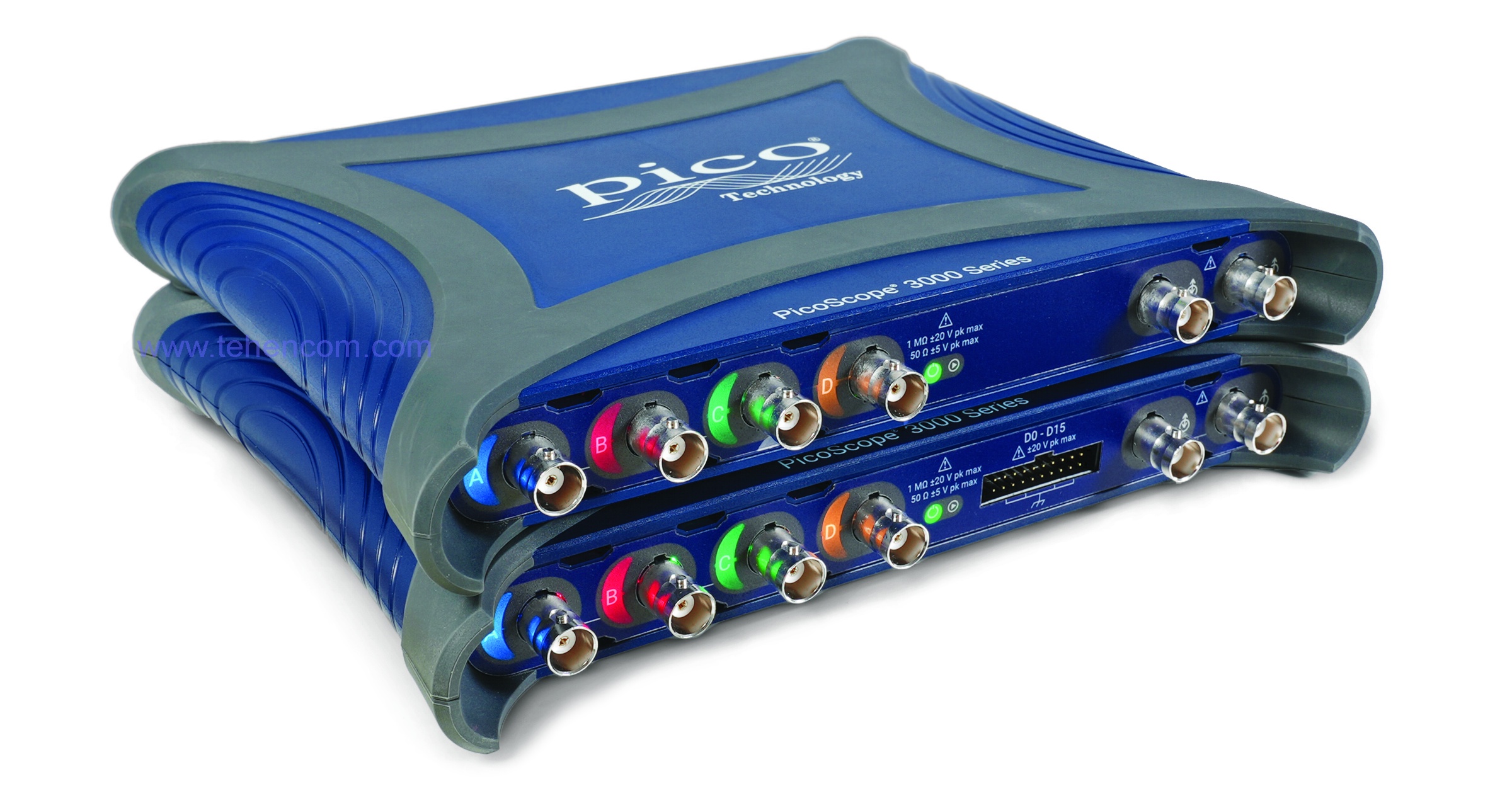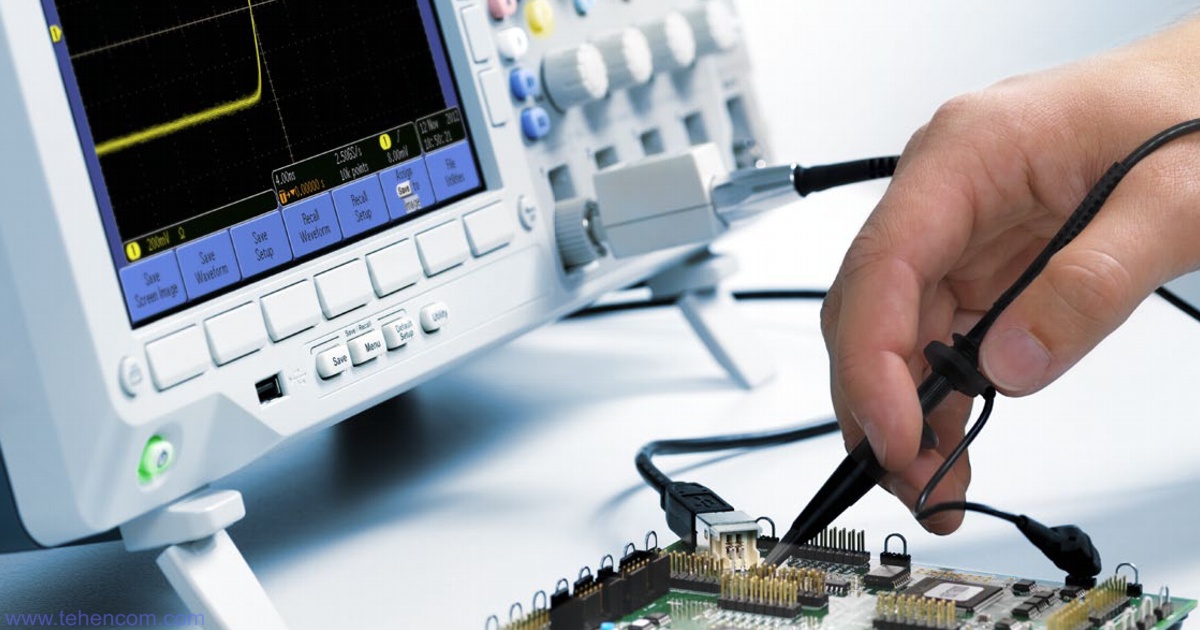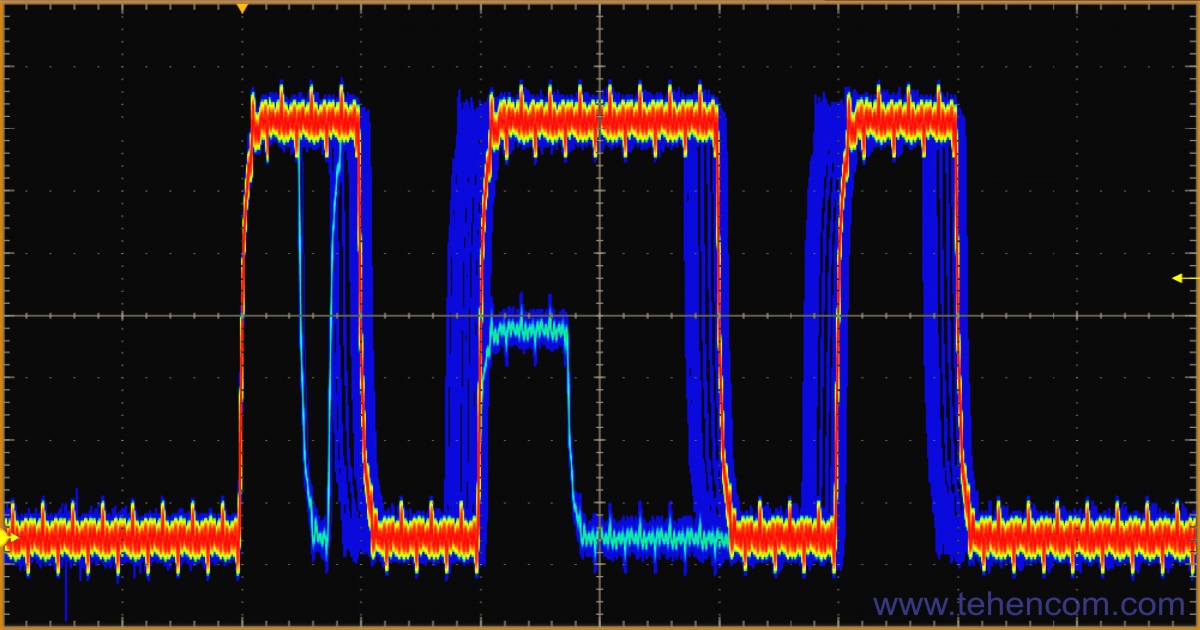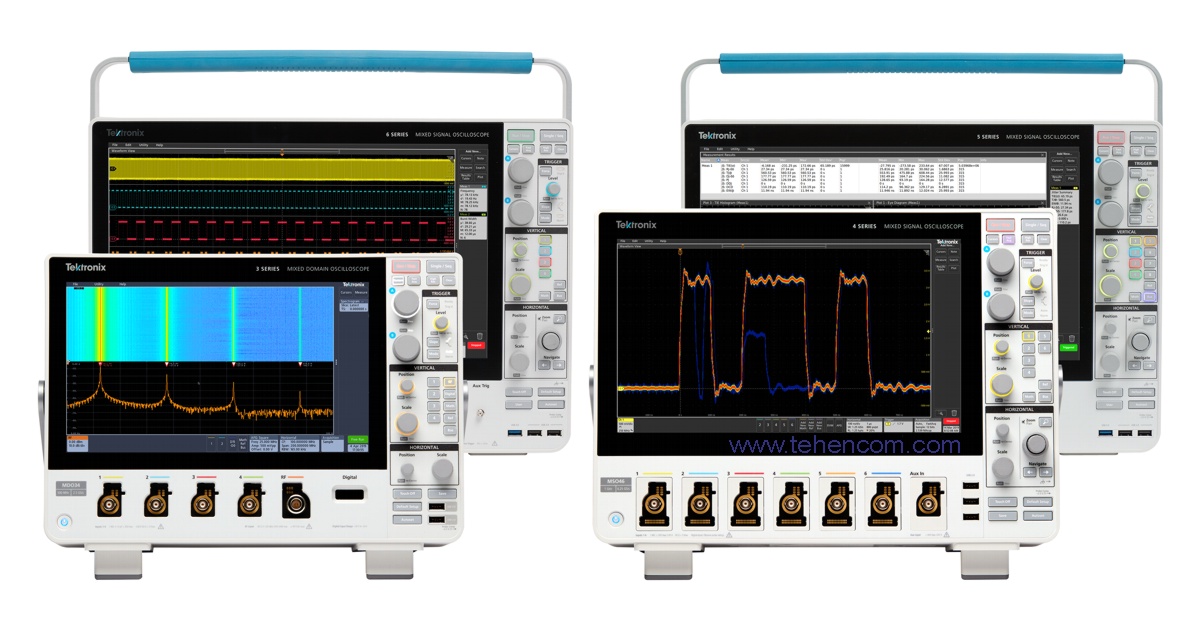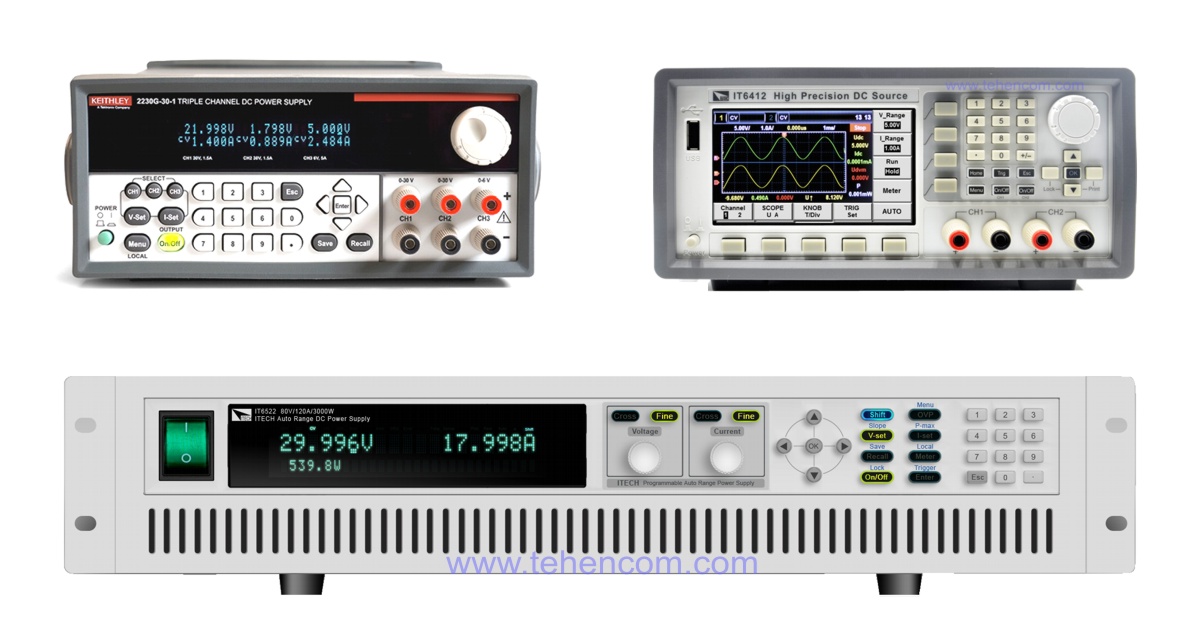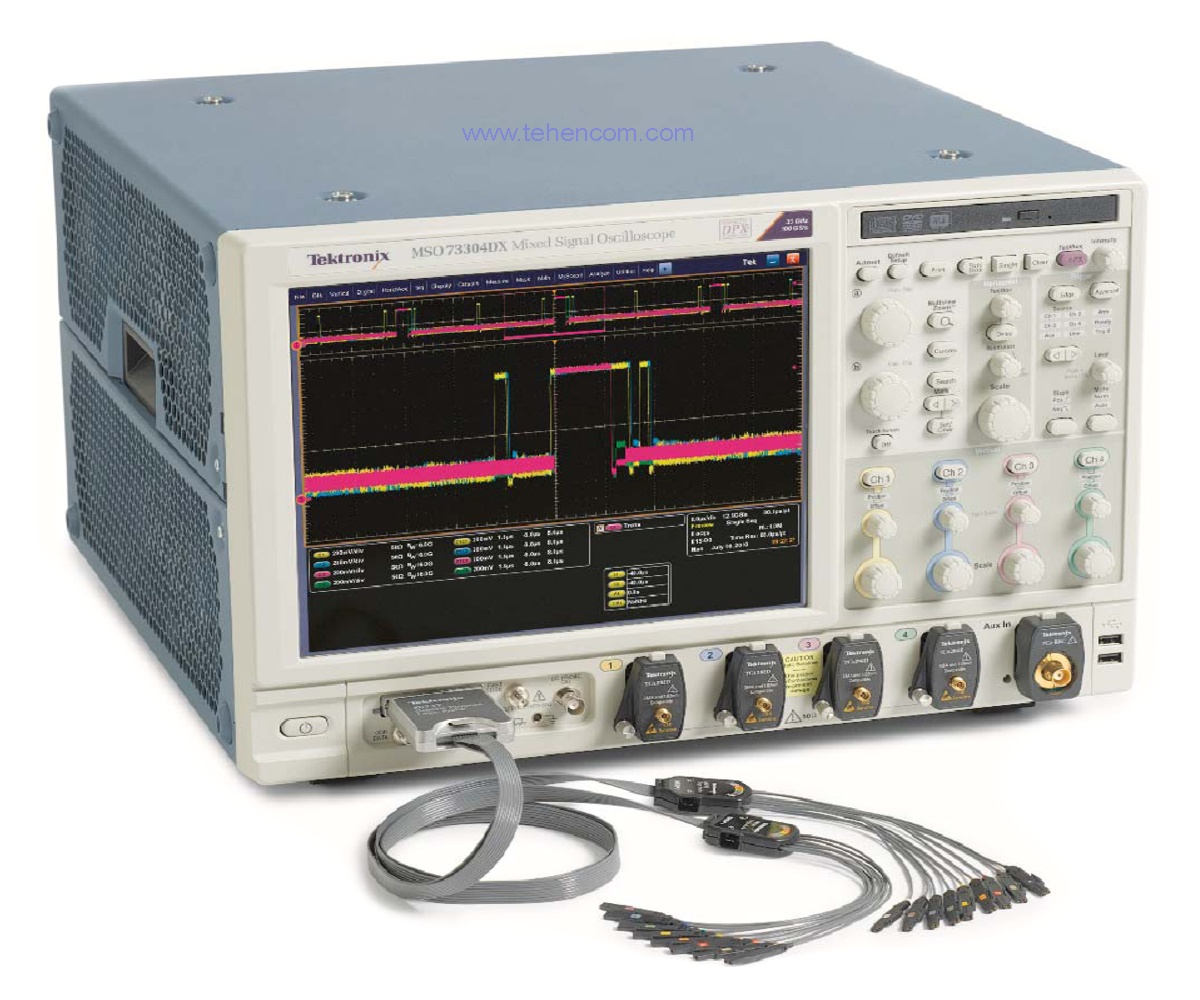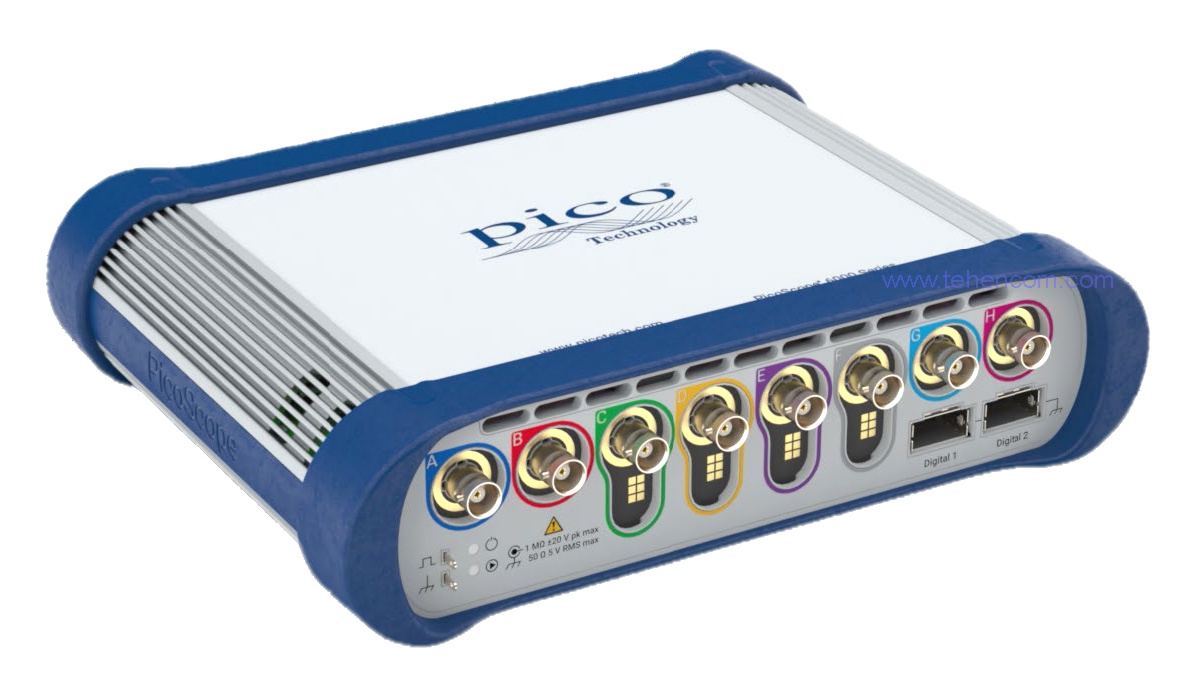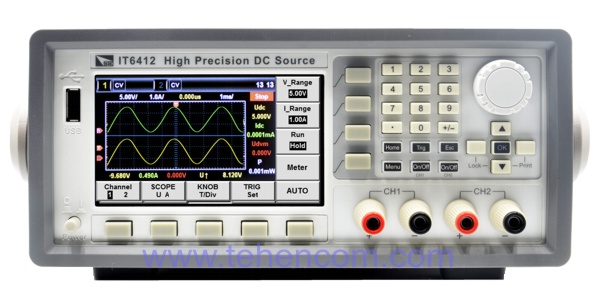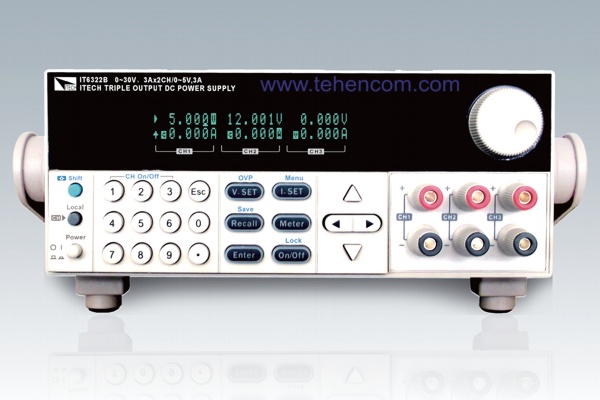Oscilloscopes 300 MHz and 350 MHz
-
NoveltyPromotionTop sales
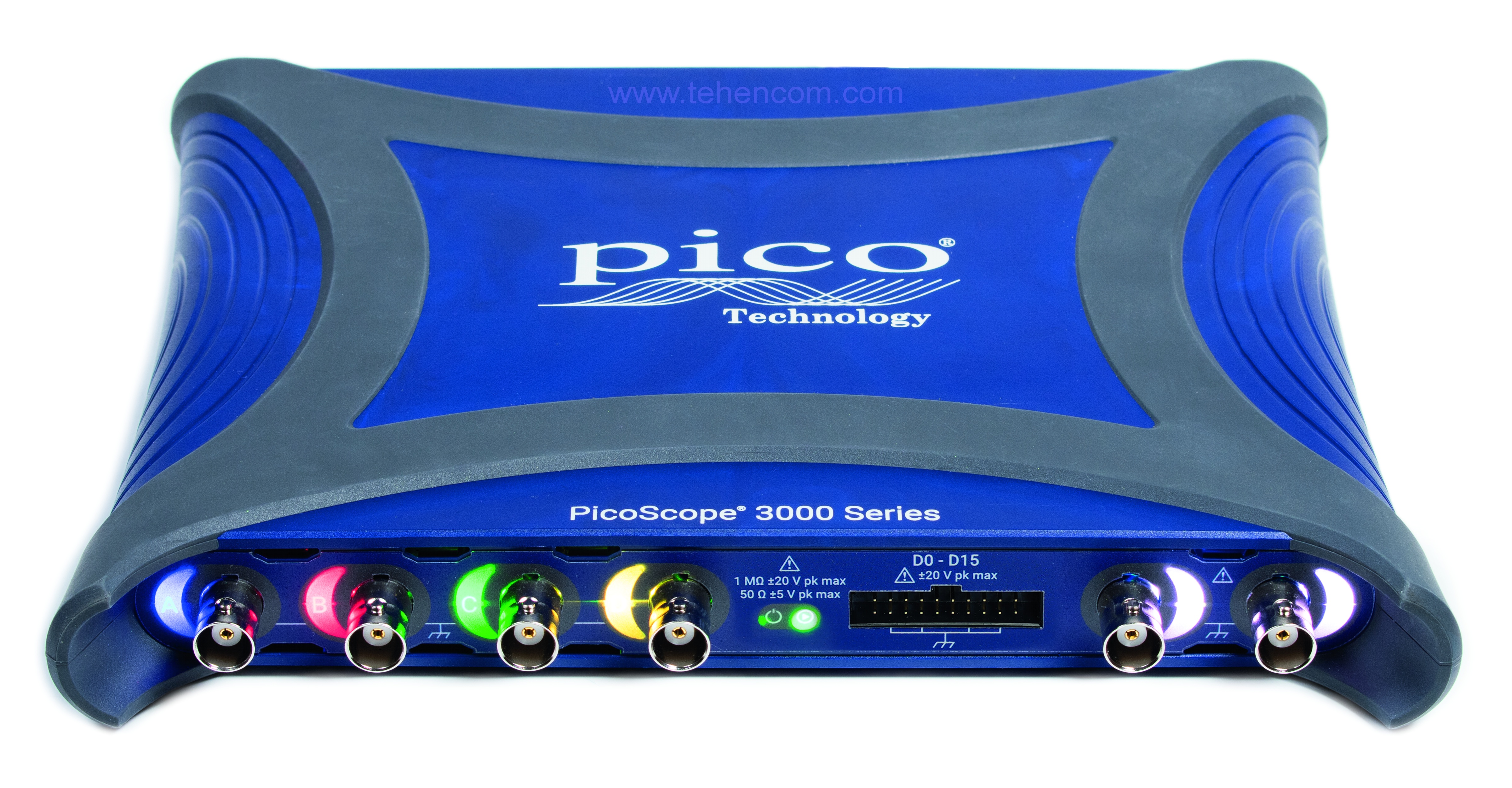 Pico Technology 3417E MSO
Pico Technology 3417E MSOOscilloscope, 350 MHz, 4 + 16 channels, 5 GS/s
From 203 065 UAH
–5%
From 192 912 UAH
On order
Product code: 3030107
Record length: 2 000 M points
Vertical resolution: 8 – 10 bits
Waveforms per second: 300 000
-
Novelty
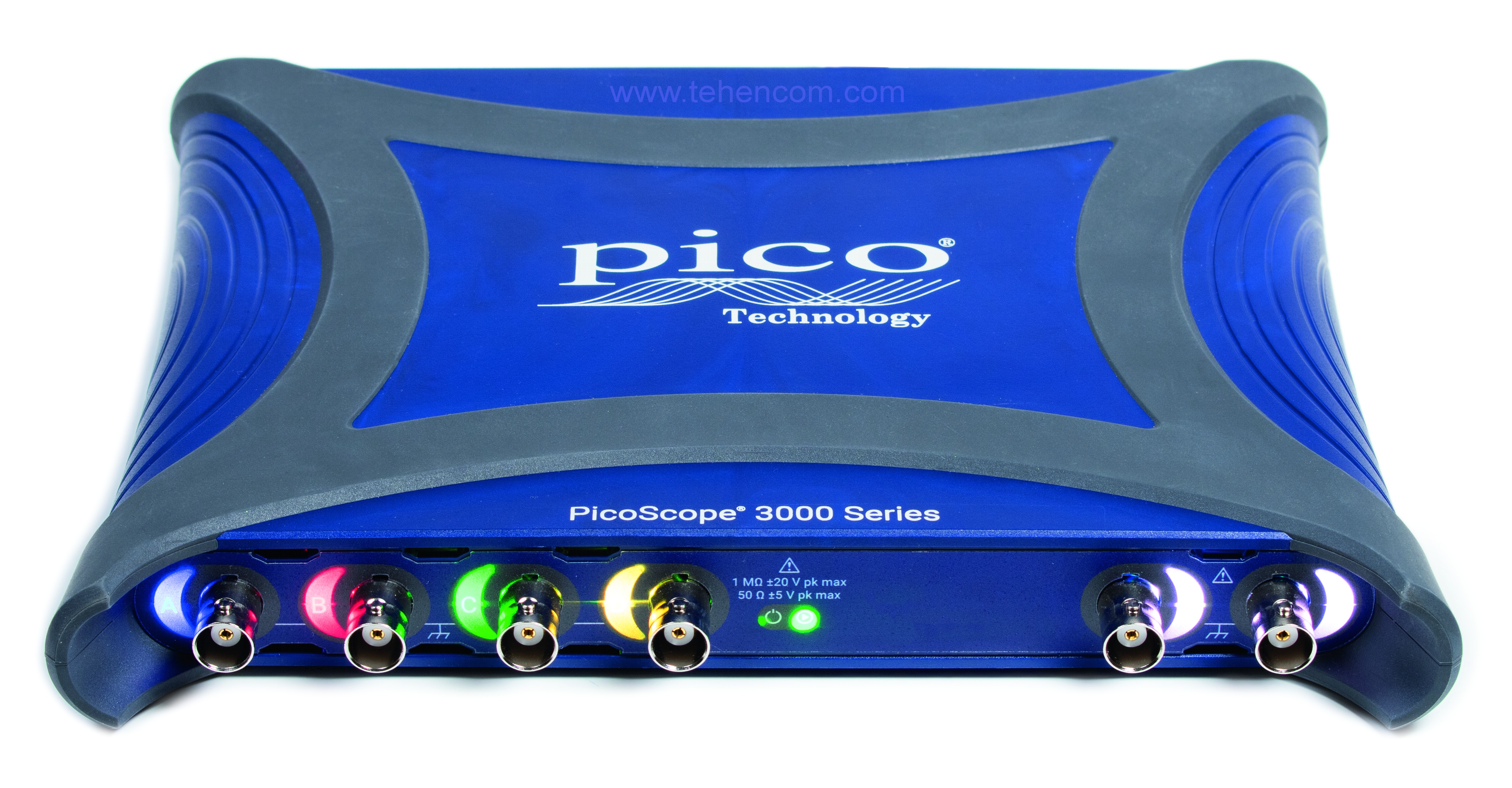 Pico Technology 3417E
Pico Technology 3417EOscilloscope, 350 MHz, 4 channels, 5 GS/s
From 180 702 UAH
On order
Product code: 3030106
Record length: 2 000 M points
Vertical resolution: 8 – 10 bits
Waveforms per second: 300 000
-
 Pico Technology 6403E
Pico Technology 6403EOscilloscope, 300 MHz, 4 + 16 channels, 2.5 GS/s
From 256 620 UAH
On order
Product code: 3030020
Record length: 1 000 M points
Vertical resolution: 8 bits
Waveforms per second: 300 000
Digital USB oscilloscope 300 MHz with large memory and high speed waveform analysis.
-
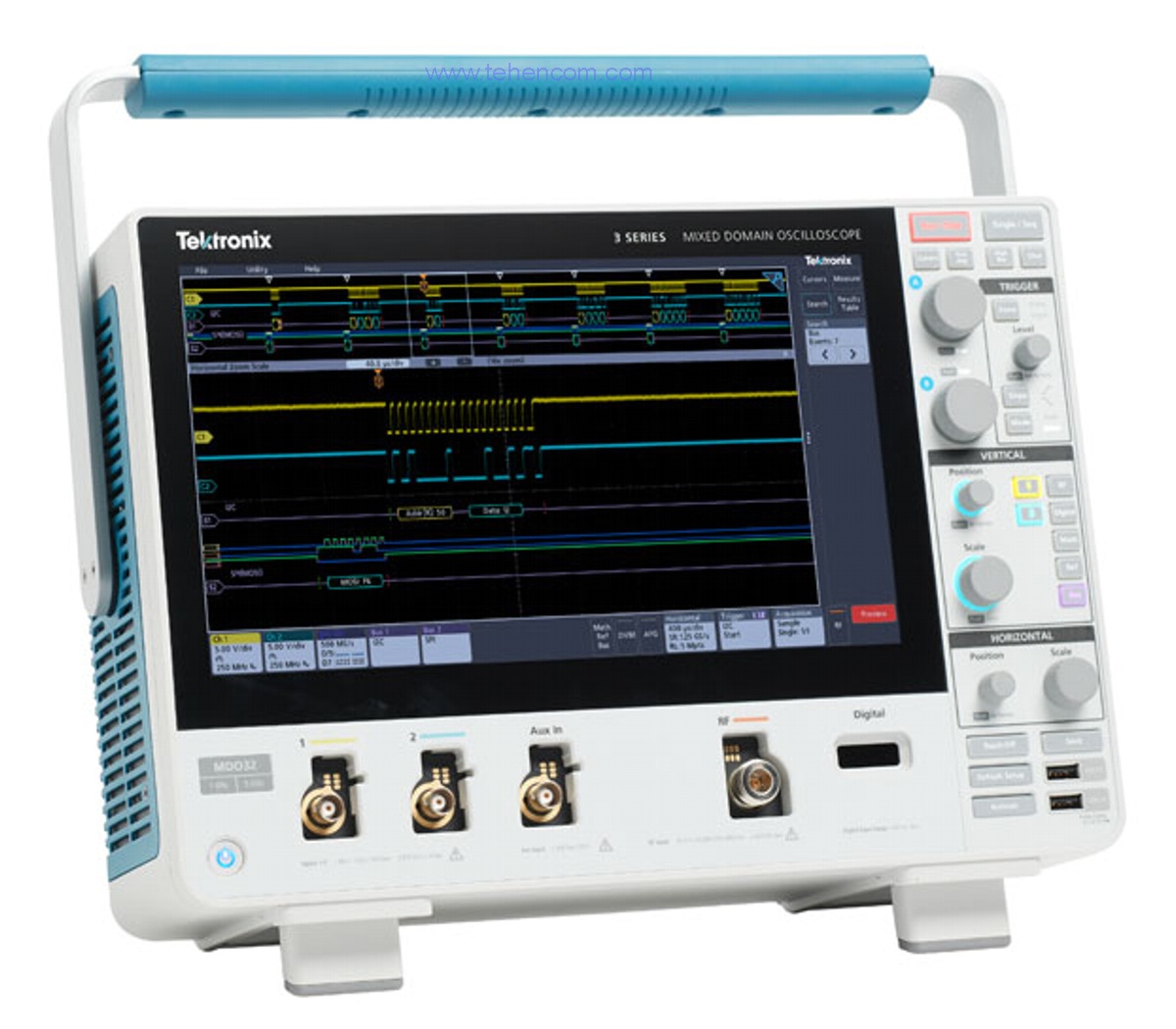 Tektronix MDO32-BW-350
Tektronix MDO32-BW-350Oscilloscope, 350 MHz, 2 + 16 channels, 2.5 GS/s
From 451 500 UAH
On order
Product code: 3030086
Record length: 20 M points 30 M points
Vertical resolution: 8 bits
Waveforms per second: 235 000
Spectrum analysis: 9 kHz – 1 GHz 9 kHz – 3 GHz
Professional 350 MHz digital oscilloscope with built-in spectrum analyzer.
-
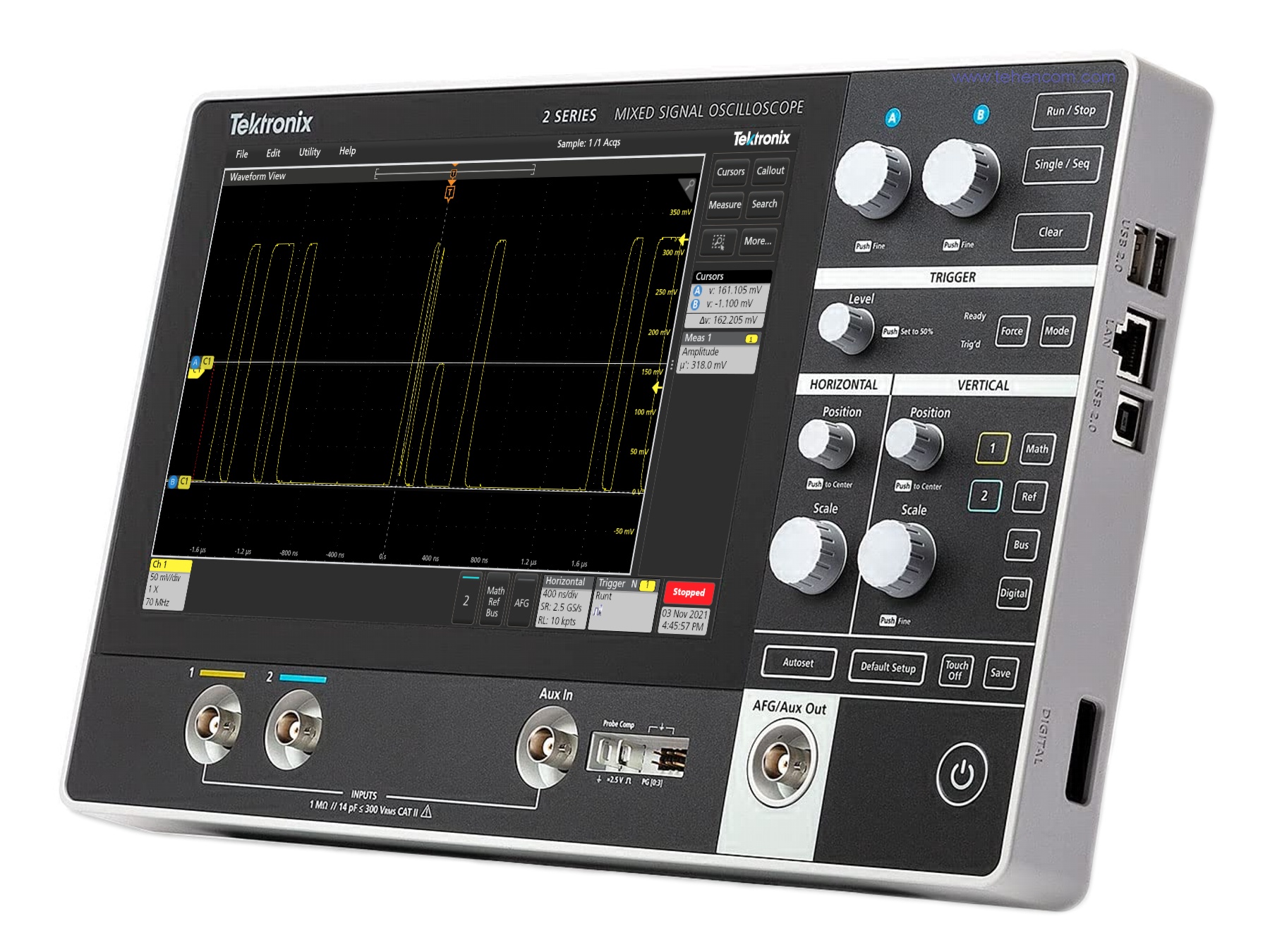 Tektronix MSO22-BW-350
Tektronix MSO22-BW-350Oscilloscope, 350 MHz, 2 + 16 channels, 2.5 GS/s
From 328 524 UAH
On order
Product code: 3030098
Record length: 40 M points
Vertical resolution: 8 bits
Waveforms per second: 100
-
 Tektronix MSO24-BW-350
Tektronix MSO24-BW-350Oscilloscope, 350 MHz, 4 + 16 channels, 2.5 GS/s
From 406 350 UAH
On order
Product code: 3030099
Record length: 40 M points
Vertical resolution: 8 bits
Waveforms per second: 100
-
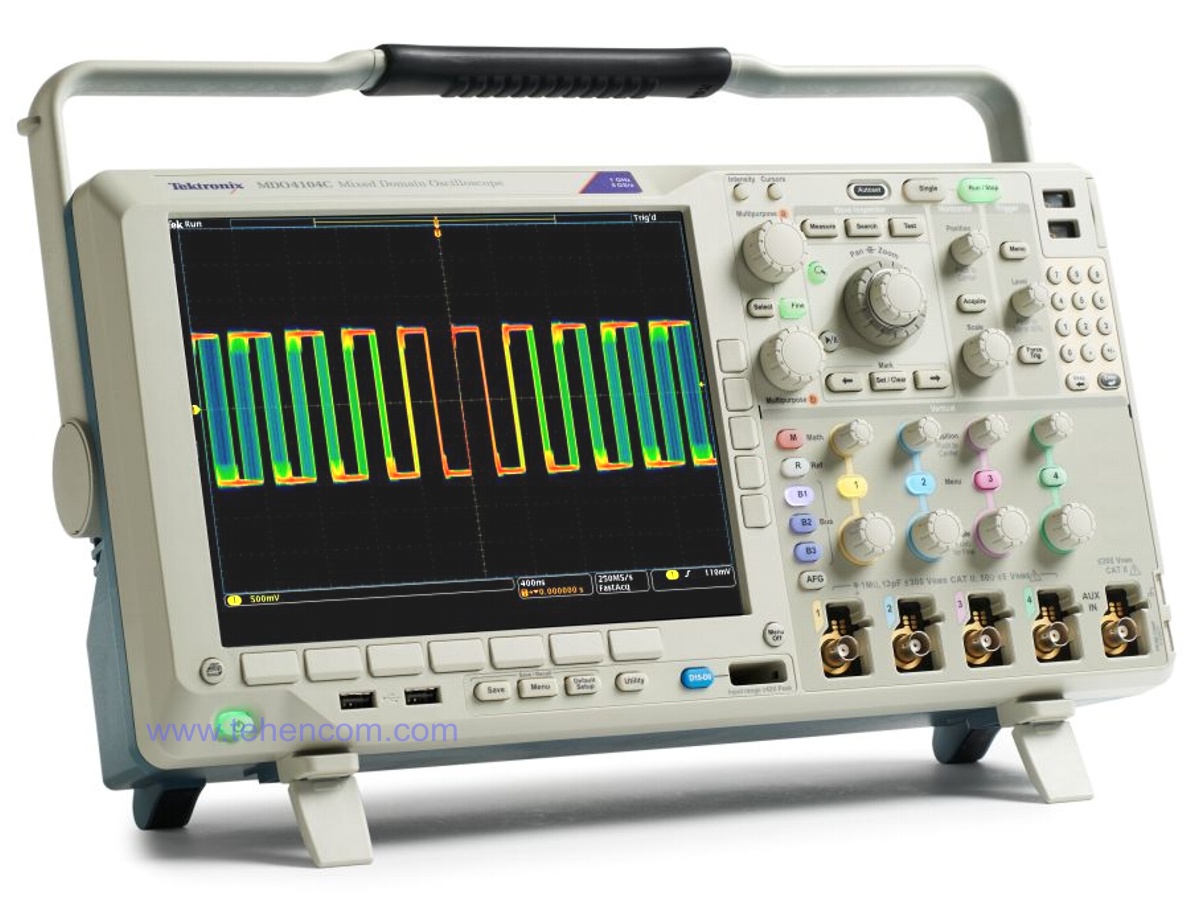 Tektronix MDO4034C
Tektronix MDO4034COscilloscope, 350 MHz, 4 + 16 channels, 2.5 GS/s
Price on request
On order
Product code: 3030031
Record length: 80 M points 100 M points
Vertical resolution: 8 bits
Waveforms per second: 340 000
Spectrum analysis: 9 kHz – 3 GHz 9 kHz – 6 GHz
Laboratory digital oscilloscope 350 MHz with built-in spectrum analyzer.
-
 Tektronix MDO34-BW-350
Tektronix MDO34-BW-350Oscilloscope, 350 MHz, 4 + 16 channels, 2.5 GS/s
Price on request
On order
Product code: 3030087
Record length: 40 M points 50 M points
Vertical resolution: 8 bits
Waveforms per second: 235 000
Spectrum analysis: 9 kHz – 1 GHz 9 kHz – 3 GHz
Professional 350 MHz digital oscilloscope with built-in spectrum analyzer.
General information
This page features digital oscilloscopes with 300 MHz and 350 MHz bandwidth. The design can be desktop, portable or as a USB attachment to a computer.
The most functional series, which includes models with a 350 MHz bandwidth, is Tektronix MSO5. Digital oscilloscopes in this series are equipped with a 39 cm touch screen with a resolution of 1920 × 1080 pixels and an innovative user interface.
A simpler series, which includes models with a 350 MHz bandwidth, is Tektronix MSO4. They contain 4 or 6 analog channels with support for FlexChannel technology (up to 48 digital channels). Signal digitization is performed using precise 12-bit ADCs, and rare signal anomalies are searched for using DPO technology (more than 500,000 waveforms per second). Additionally, the bandwidth of these oscilloscopes can be expanded to 1.5 GHz at any time with a simple software key activation.
Another professional series that has an oscilloscope with a 350 MHz bandwidth is the Tektronix MDO4000C. The devices in this series are unique in that they contain a built-in spectrum analyzer up to 6 GHz. At the same time, the signals from the analog and digital channels of these oscilloscopes and the signal from its RF input are precisely related in time, which makes it possible to correlate events in the frequency domain with the causes that cause them in the time domain and vice versa.
Of all the mid-level series, the most functional is Tektronix MDO3 and it includes two 350 MHz oscilloscopes for 2 channels and 4 channels. The series is equipped with a large touch screen with a resolution of 1920 × 1080 pixels and a built-in spectrum analyzer up to 3 GHz (simpler than the MDO4000C series). Additionally, the bandwidth of these oscilloscopes can be expanded to 500 MHz at any time by activating the software key.
Of the mid-range USB oscilloscopes offered by Pico Technology (United Kingdom), the PicoScope 6000E series includes one model with a 300 MHz bandwidth. This is the PicoScope 6403E model with four analog channels, plus the ability to add 8 or 16 digital channels by simply connecting one or two digital probes.
If you are choosing your first oscilloscope and are not very familiar with their types and characteristics, we recommend reading this article: How to choose a digital oscilloscope.
Documentation and useful materials
-
Tutorial on the basics of oscilloscope measurements
RU, 60 pages, 2 MB
-
Tutorial on the oscilloscope probes
RU, 60 pages, 4 MB
-
12 things to consider when choosing an oscilloscope
RU, 30 pages, 7 MB
-
Probes selection guide for Tektronix oscilloscopes
EN, 23 pages, 4 MB
Need help choosing equipment?
To simplify the process of choosing the optimal set of equipment, you can use our experience and recommendations. We have more than 20 years of practical supply experience and we can immediately answer many questions about models, options, terms, prices and discounts. This will save your time and money. To do this, just contact us or order a free consultation and we will be happy to answer your questions.
